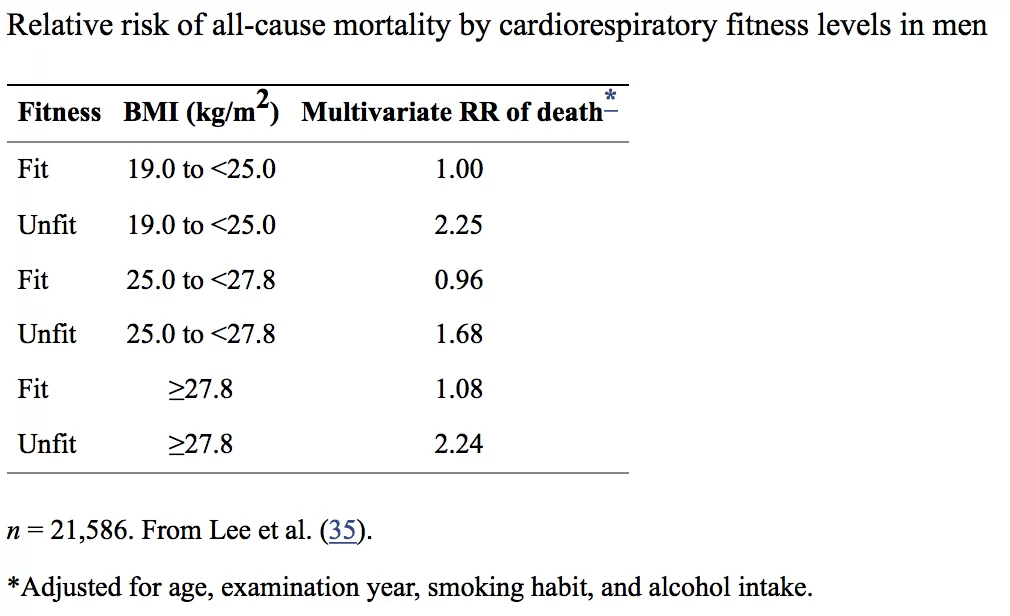Physical Activity Benefits
In today’s society, it has become common knowledge that exercise and physical activity is “good” for you. But what does that really mean? Most people think it’s because you are losing weight, which is true to a certain extent, but there is much more to the benefits of physical activity than that. What I am referring to is the impact physical activity has on mortality or ones risk of death.
Death Rate and Physical Activity
Multiple studies in recent time have started to look at the effect of physical activity and mortality (death). It should be no shock that there is a correlation between physical activity and mortality. It also should not be surprising that people who exercise have a significantly lower mortality rate. In addition it is interesting how much the risk of mortality can decrease with physical activity and the differences between different populations.
Sedentary to Moderate Physical Activity
In a study done by Blair et al. men and women of all fitness levels were studied. Over a five-year period, the study looked at changes in fitness levels and risk of death. It comes as no shock that people who exercised more had a lower risk. However, it was surprising to see the very significant decrease in the risk of death for individuals who started out sedentary and who had only a modest (relatively small) increase in physical activity. This risk of death for these individuals decreased on average about 50% for both men and women. This justifies that even the smallest amount of physical activity can lead to significant health benefits especially for those that are sedentary.
Lean and Unfit vs Fat and Fit

Some people are naturally “lean” or have low body fat. However, just because you are lean does not mean you are healthy. A study has shown that people who are overweight (BMI=25.0-29.9) and “fit” have a significantly lower risk for all-cause mortality when compared to individuals who are “lean” or a healthy weight (BMI 18.0-24.9) and “unfit”. This was a HUGE finding. The study refers to this as “it is better to be fat and fit than unfat and unfit”. Meaning that the cardiovascular benefits of physical activity helps to counter balance the hazards of being fat or overweight. This in no means supports eating unhealthy or being overweight/obese, but shows that exercise has benefits to the body that are outside of decreasing adiposity or fat.
Obese Fit vs Obese Unift
As we all know, exercising alone without a proper diet still might result in no weight loss. This is what was looked at in this study. They examined obese individuals who either remained sedentary or started becoming physically active. Both groups maintained the same body weight throughout the entire study, but interestingly enough the group who started exercising had a significantly lower all-cause mortality rate compared to the group that did not. This goes back into the what was stated earlier that even if you are not losing weight you are still benefiting from physical activity!
So, How Much Exercise is Enough?
There are many different recommendations out there, but a couple common ones are to at least accumulate 150 minutes of moderate physical activity a week or 75 minutes of vigorous activity. Some examples of moderate or vigorous exercises provided by American Heart Association are:
Examples of Moderate Intensity:
- Walking briskly (3 miles per hour or faster, but not race-walking)
- Water aerobics
- Bicycling slower than 10 miles per hour
- Tennis (doubles)
- Ballroom dancing
- General gardening

Examples of Vigorous Intensity:
- Race walking, jogging, or running
- Swimming laps
- Tennis (singles)
- Aerobic dancing
- Bicycling 10 miles per hour or faster
- Jumping rope
- Heavy gardening (continuous digging or hoeing)
- Hiking uphill or with a heavy backpack
Before starting an exercise program, you should consult your doctor and other health professionals to see what kind and type of exercise is right and safe for you.
Summing it up
In today’s society it is common knowledge that exercise and physical activity is “good for you”. However, you may have not realized how important it is in reducing the risk of all-cause mortality outside of just losing weight. This doesn’t just mean reducing the risk of something such as a heart attack, but reducing the risk of EVERYTHING. As stated before, just a small increase in exercise can decrease the risk of dying by sometimes up to 50%.


